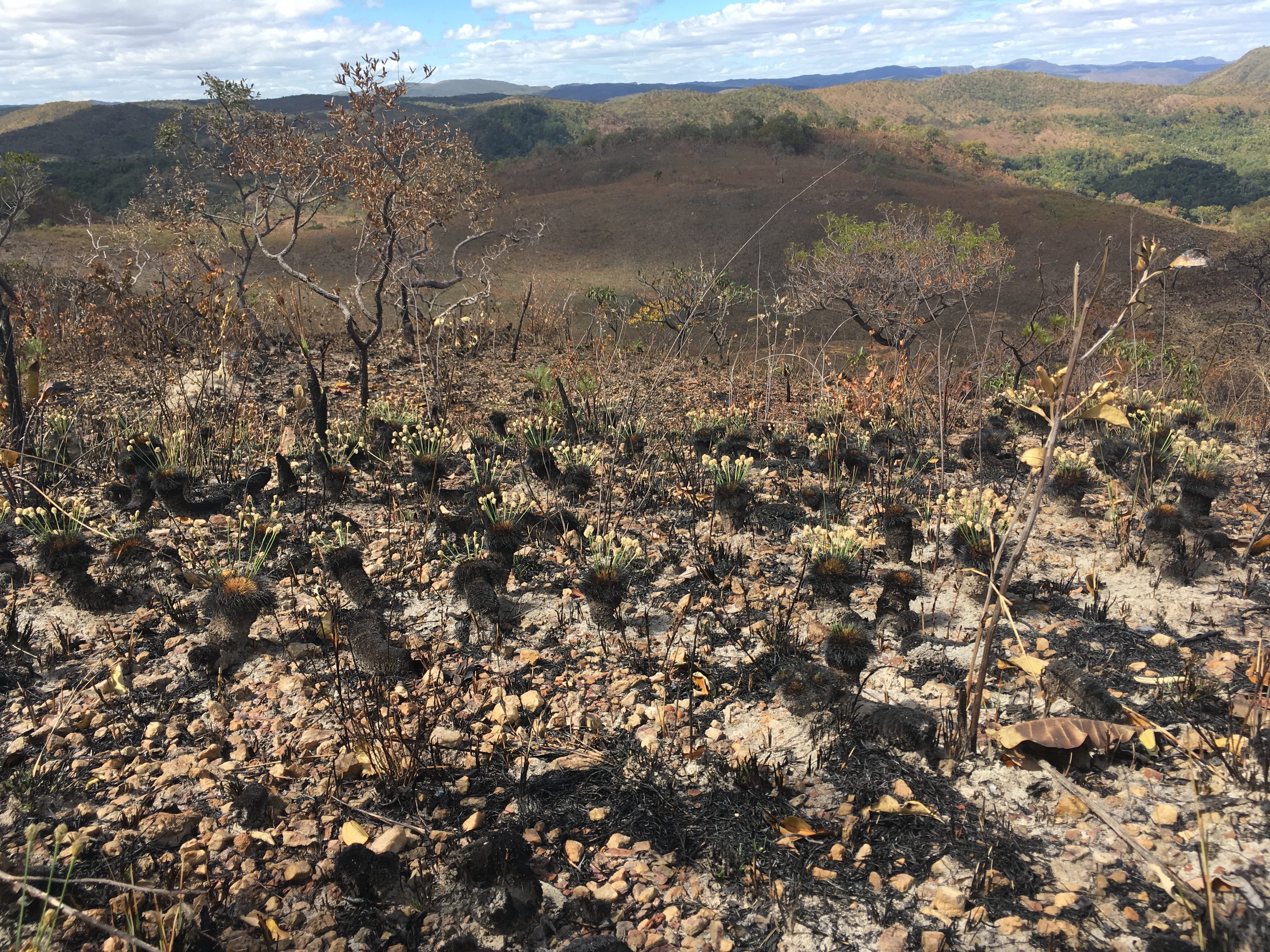This Brazilian Plant Regenerates Just a Day After Being Scorched by Wildfire
And its flowers bloom only a week later.

The vastest savanna in South America, the Cerrado, is a tree-heavy, neotropical biome known for its remarkable biodiversity. This ecoregion—made up of both wet and dry grasslands and their deep root system—is primarily located in Brazil, and boasts more than 12,000 different plant species. One of these species, Bulbostylis paradoxa, stands out from the rest. Scientists in Brazil recently found that this plant, a grass-like sedge, has adapted to bloom—and bloom fast—just after a wildfire scorches past.
In all sorts of environments, from mountain ranges to canyons, wildfires have been known to lead to superblooms, which result when seeds in the soil are warmed and promptly nourished. Natural wildfires are part of the lifecycle of these natural settings, but more devastating anthropogenic fires (created by accident or to clear pastures and other areas) have become more common in recent years. To study the impacts of fires—natural and human-made—scientists from the University of São Paulo created fires in controlled areas of the biodiverse hotspot. And that’s when B. paradoxa’s special attributes emerged. “We’ve had experimental fire plots in central Brazil since 2013, because we want to understand how fire season and frequency will affect the Cerrado vegetation. And we used our plots to study this amazing species,” says Alessandra Fidelis of the University of São Paulo, lead author of the article in the journal Ecology.

After burning an open clearing where this perennial herb thrives, Fidelis and her team were stunned by what happened next. “After being charred, burned, the first thing you can see in this plant are the inflorescences starting to develop. You see new leaves rerouting from the caudex-like [stem-like] structure. After some days, when it is already fully flowering, leaves started to regenerate,” says Fidelis. Those inflorescences actually appeared the very next day, and flowers were in bloom only a week later, while the rest of the landscape was still charred. “This plant responds very quickly to fire. Usually, when there is no fire, they do not flower,” she adds. “And you have to think that our fires happen usually during the dry season, when there is no rain, which makes this plant more impressive—it can flower very quickly when there is no water in the system, no rains.”
Now researchers are trying to understand the physiology of the plant to find just what causes it to react to heat this way. “We think that this plant accumulates resources in the caudex and these resources are very quickly allocated for the production of flowers as soon as fire happens in the area,” says Fidelis. “We cut the leaves to mimic fire, with no flames, no high temperatures, and we could observe it flowering, but not as fast and not as intense as the individuals that were really burned.”
For all its apparent resilience to flames, the Cerrado as a whole is in hot water. Exotic, non-native monocultures (such as soybeans) are changing the land’s natural makeup, and pushing out the plants who have called this South American savanna home for centuries or longer. “We hope that his research will bring more attention to the importance of tropical savannas and the herbaceous vegetation as well,” says Fidelis. “Our study shows the importance of fire for a particular plant, which will also influence the rest of the plant community and some ecosystem services, such as pollination and carbon allocation.” Ideally, the miraculously rapid rebound of B. paradoxa will encourage more people to understand the role that fire plays in the management of this expansive, ecologically critical grassland.
















Follow us on Twitter to get the latest on the world's hidden wonders.
Like us on Facebook to get the latest on the world's hidden wonders.
Follow us on Twitter Like us on Facebook